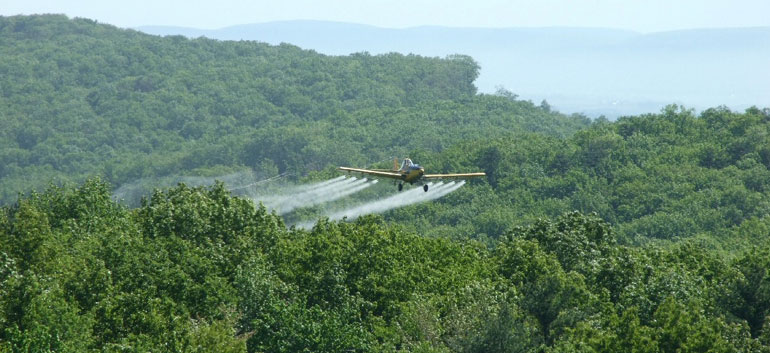Colombia may have violated its agreement with Ecuador to forgo aerial fumigation near its border, according to a report by the Ecuadorean Interagency Committee Against Fumigation, or CIF.
The NGO charged with monitoring environmental conditions along the Colombian border reported that it received several complaints of illness last week, including a community of schoolchildren in San Martin, who have complained of headaches.
According to CIF, the resurgence of illnesses relating to the chemical glyphosate, which is used in areal crop fumigation, is causing fear in Ecuadorean communities that have now been symptom-free for seven years.
In 2005, the two counties agreed to an “exclusion zone” of 10 kilometers along the Colombia-Ecuador border. A September 2014 agreement shrunk the buffer zone to 5 kilometers, and left open the possibility of reducing the distance even further in the future to just 2 kilometers.
Ecuadorean farmers have claimed that in the past the chemical has reached distances of up to 40 or 50 kilometers into Ecuadorian territory.
MORE: Colombia can fumigate closer to Ecuador border: bi-national committee
The drug war’s chemical trail
Colombia is one of the largest producers of cocaine in the world. The profitability of coca production, processing, and trafficking has contributed to a decades-old conflict in the country between left-wing, right-wing groups and non-ideological drug gangs struggling for control of the trade.
The process of aerial spraying involves the release of the herbicide glyphosate from planes over areas that are believed to be sites where illicit crop cultivation takes place.
The National Pesticide Information Center (NPIC) defines glysophate as “a non-selective systematic herbicide.” While the NPIC reports no links to human health problems in small doses, the concentration of glysophate used in aerial fumigation in Colombia (44%) is reportedly five times higher than recommended by Round Up (1-7%) and almost double the maximum concentration limit (29%).
MORE: The victims of Colombia aerial fumigation
In 2008, the Ecuadorian government filed a lawsuit against Colombia to the International Court of Justice (ICJ) in 2008 after the herbicide drifted across the border onto Ecuadorian territory. Ecuador based their complaint on the grounds that “the spraying caused serious damage to people, crops, to animals and to the natural environment.”
In September 2013, the Colombian government acknowledged Ecuador’s complaints and the two sides reach a settlement of $15 million compensation for the damages.
MORE: Colombia pays Ecuador $15 million for damages from aerial spraying
US continues to support aerial fumigation
Colombia is estimated to supply around 90% of the cocaine that makes it to the United States. With the support from multi-billion dollar US aid packages for the war on drugs, Colombia has been practicing aerial crop fumigation for 20 years.
According to Daniel Mejia, the current president of the Colombian government’s special advisory commission on drug policy, the United States government continues to advocate aerial fumigation of coca fields despite clear human rights problems and proof that this eradication method costs exponentially more than attacking drug traffickers.
In addition to the proven environmental and health disturbances, Meija claims that there is mounting evidence showing fumigation to be ineffective as an anti-drug strategy.




